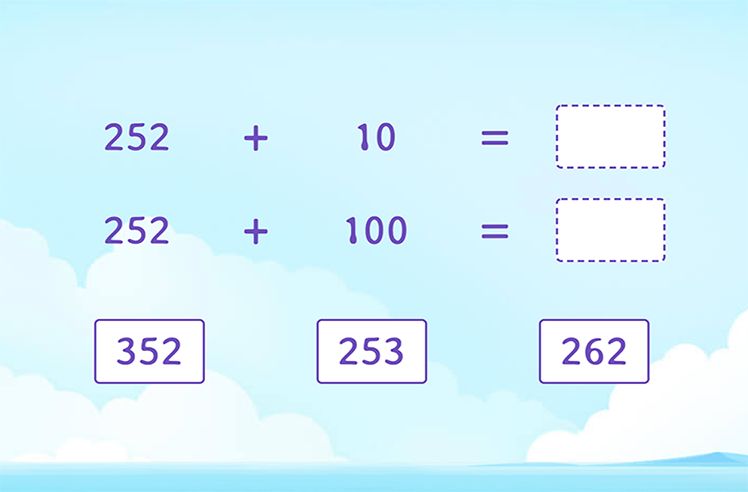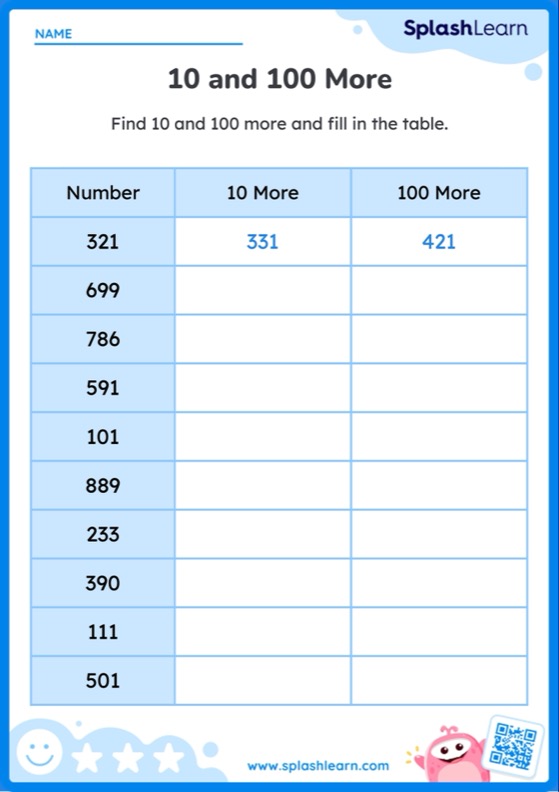What is a Number Sentence?
A number sentence is a mathematical sentence made up of numbers and symbols, as shown below.

The term “number sentence” is introduced at the elementary school level. However, the application of these sentences extends beyond elementary school because it includes equations and inequalities. These sentences can also be described as the language of mathematics. As shown below, a sentence combines two expressions with a relational symbol $(=, \gt, \lt, \text{etc.})$.
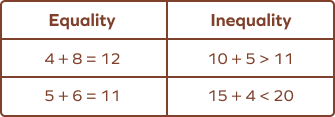
These sentences show the equality or inequality relations using different mathematical operations like addition, subtraction, multiplication, and division.
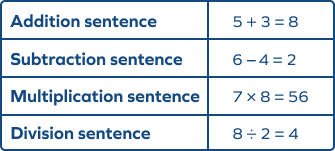
The sign of equality and inequality is significant as the sentence is incomplete and makes no sense without them.
$10 + 8 \gt 15$, is an example of a number sentence. However, if we write $10 + 8$ $15$, it does not make any sense.
A math sentence can be true or false depending on the information provided.
A mathematical sentence that gives all the information and is known to be either true or false, as shown in the example below.
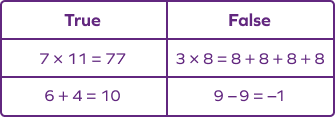
Recommended Games
Application of Number Sentences
Mathematical sentence problems can appear in the form of word problems, asking students how to write a number sentence.
For example: Mary has 10 strawberries. If Dan gives her 15 strawberries, how many strawberries does Mary have in total?
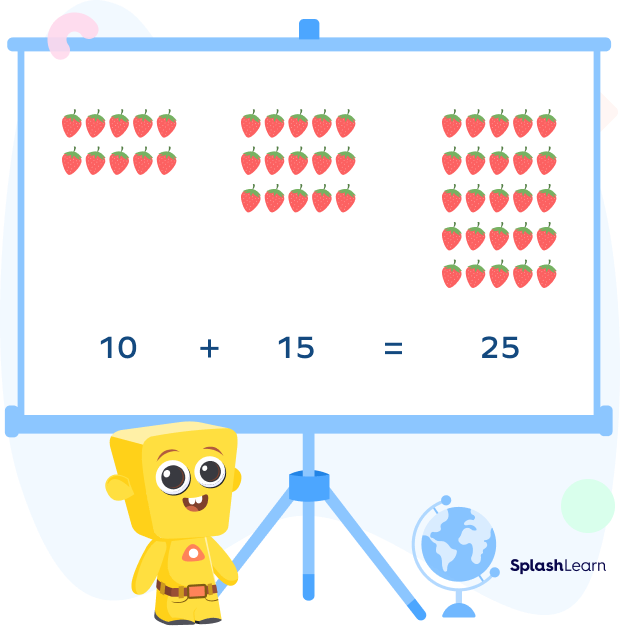
So, Mary has $10 + 15 = 25$ strawberries.
Recommended Worksheets
Why Do Students Need to Be Fluent in Math Sentences?
- Mathematical sentences help students understand algebra. This involves weaving algebraic thinking into elementary and middle-school math.
- Math sentences provide flexibility to solve a problem as compared to basic algorithms. Using sentences, students can break the numbers out to see the value of each digit. They can compose and decompose numbers by place value or use other strategies, building their reasoning and mental math skills as shown in the example below.
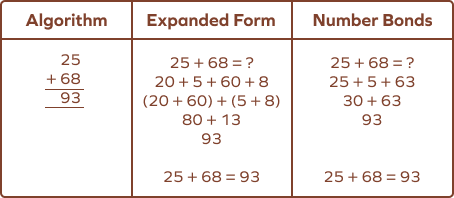
Fun Fact!
Number sentences are simply the numerical expression of a word problem.
Solved Examples On Number Sentence
Example 1: Determine whether the following sentence is true or false.
$12 + 12 + 12 \lt 4 \times 12$
Solution:
The expression on the right side of the inequality (less than) sign is $12 + 12 + 12$, which is equal to 36.
Solving expressions on the right side of the inequality (less than) sign, we get $4 \times 12$ or 48.
Since $36 \lt 48$, we can say the given sentence $12 + 12 + 12 \lt 4 \times 12$ is true.
Example 2: Complete the math sentence so that it is true.
$6 + 7 = 9$ $+$ $\underline{}$
Solution:
$6 + 7 = 13$
So, to make the sentence true, $9$ $+$ $\underline{}$ must be equal to 13. Therefore, the missing number must be $13$ $–$ $9$ or 4.
Example 3: Substitute the value into the variable (x) and state whether the resulting sentence is true or false.
$12 –$ x $= 9$, substitute 4 for x
Solution:
If we substitute x as 4 in the given sentence, we $12$ $–$ $4 = 9$, which is false, as $12$ $–$ $4 = 8 ≠ 9$.
Example 4: Find the value of the x so that the following sentence is true.
$\text{x}$ $–$ $24 = 10$
Solution:
Adding the same number to both sides of the equal sign will keep the sentence true.
To find the value of x, we can add 24 to both sides of the equal sign.
$\text{x}$ $–$ $24 + 24 = 10 + 24$
Therefore, $\text{x}$ $= 34$
Practice Problems On Number Sentence
Number sentence - Definition With Examples
Which of the following is not a number sentence?
A mathematical sentence must show a relation between two expressions with symbols like $= , \lt \text{or} \gt$. Thus, $66 + 30$ is not a sentence.
Select the correct statement for the sentences given below.
$40 + 30 = 70$
$90 + 1000 = 1900$
$40 + 30 = 70, \text{but} 90 + 1000 = 1090 ≠ 1900$
Identify the symbol that can fill the blank to make the sentence true?
90 ◯ 20 = 70
$90$ $–$ $20 = 70$
Frequently Asked Questions On Number Sentence
Is it important for a number sentence to be true?
A math sentence does not necessarily have to be true. However, every sentence gives us information, and based on the information provided, it is possible to change the statement from false to true.
What is the difference between equations and inequalities?
An equation is a mathematical sentence that shows the equal value of two expressions while an inequality is a sentence that shows an expression is lesser than or more than the other.
Can fractional numbers be written in the form of a number sentence?
Yes, fractional numbers can be written in the form of a sentence. For instance,
$\frac{3}{4}+\frac{5}{4} = \frac{8}{4}$
















